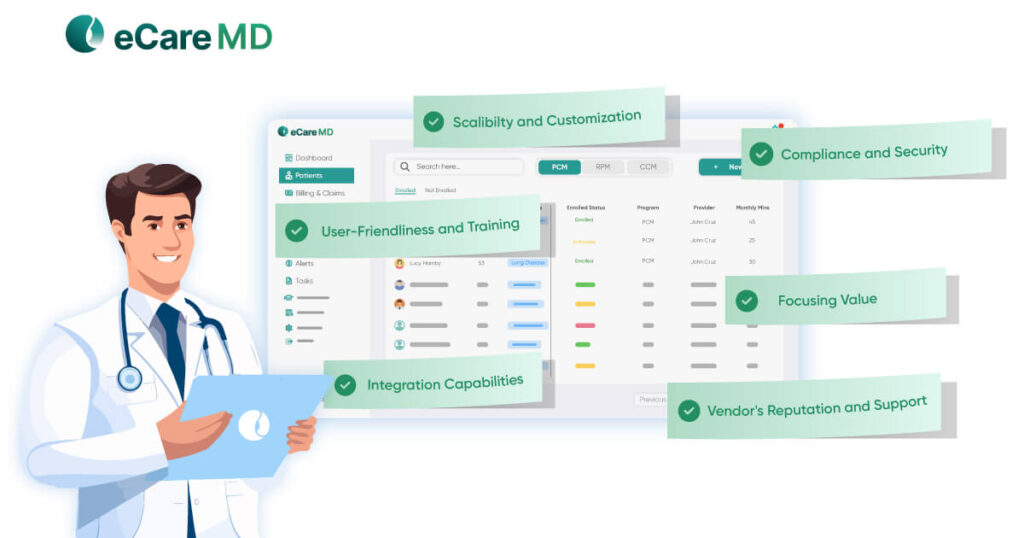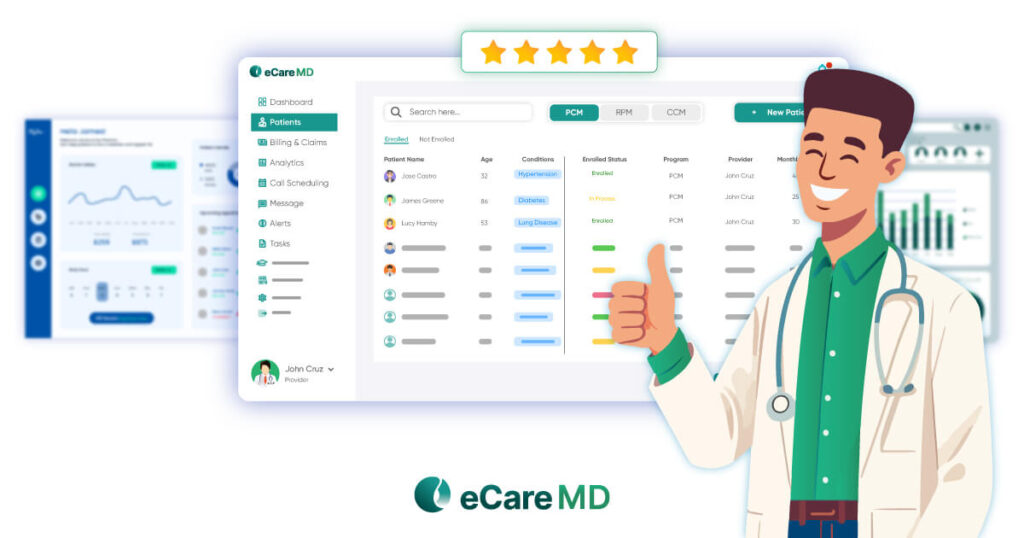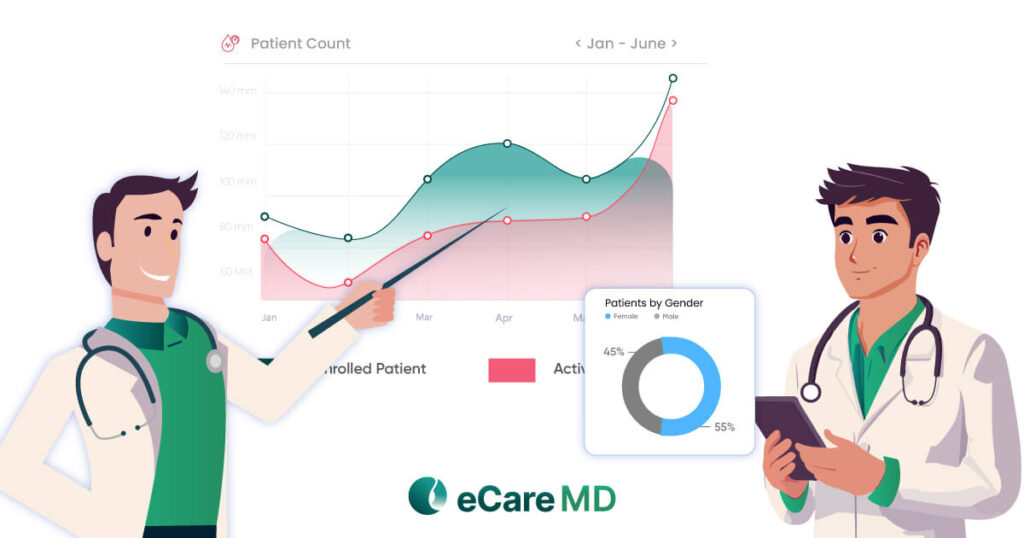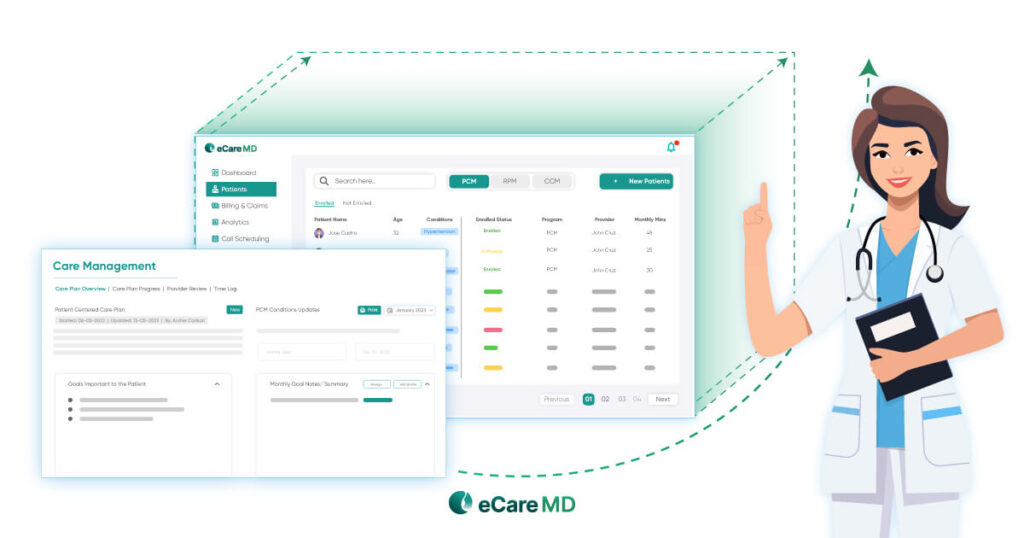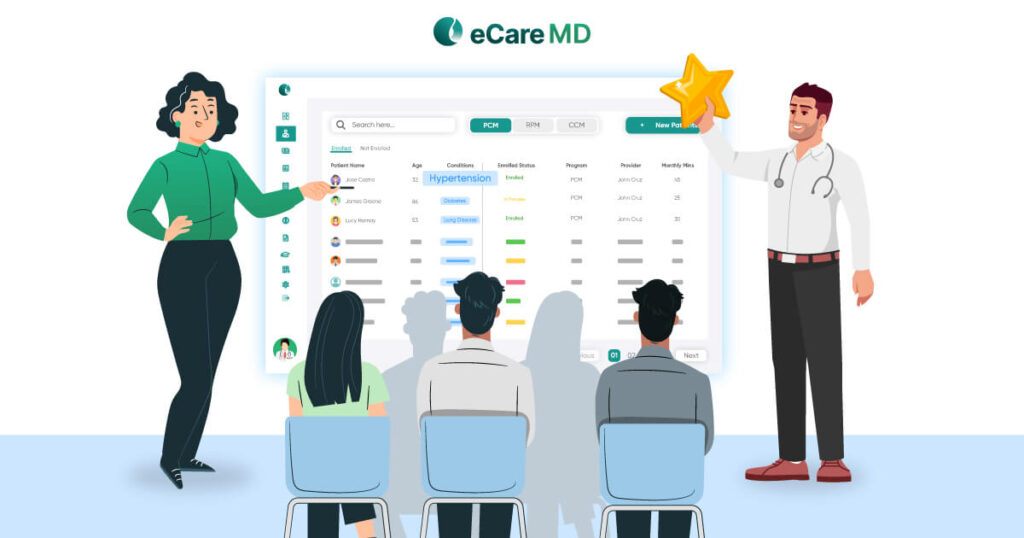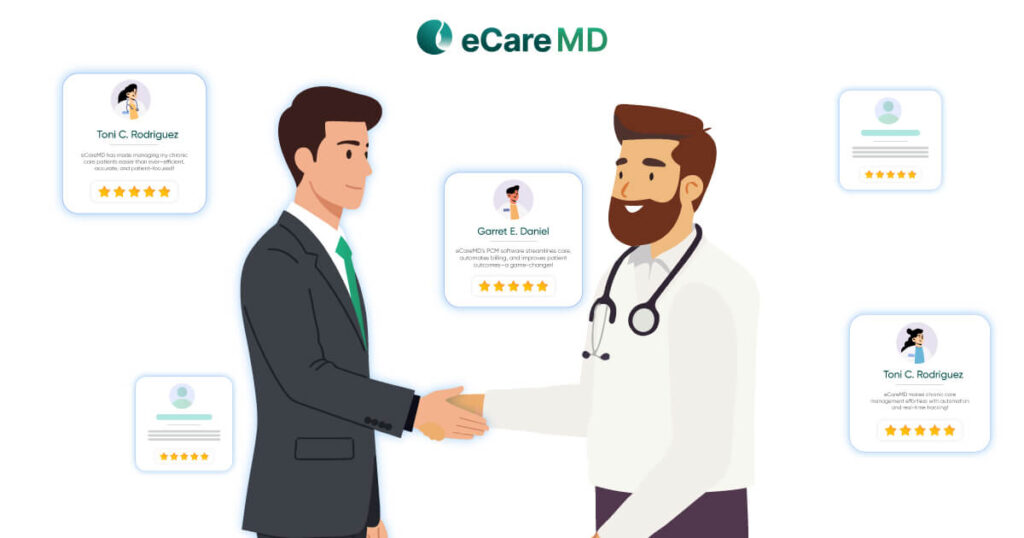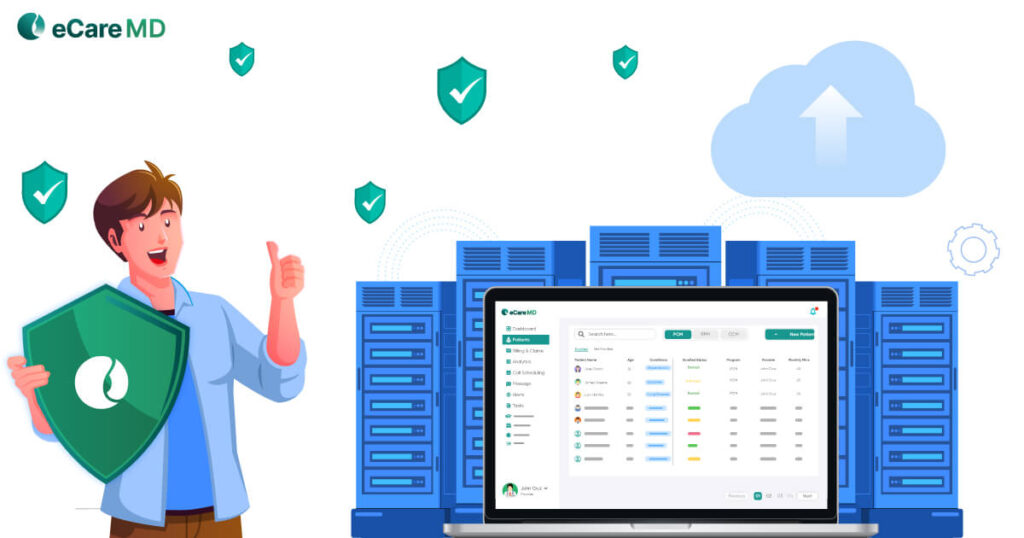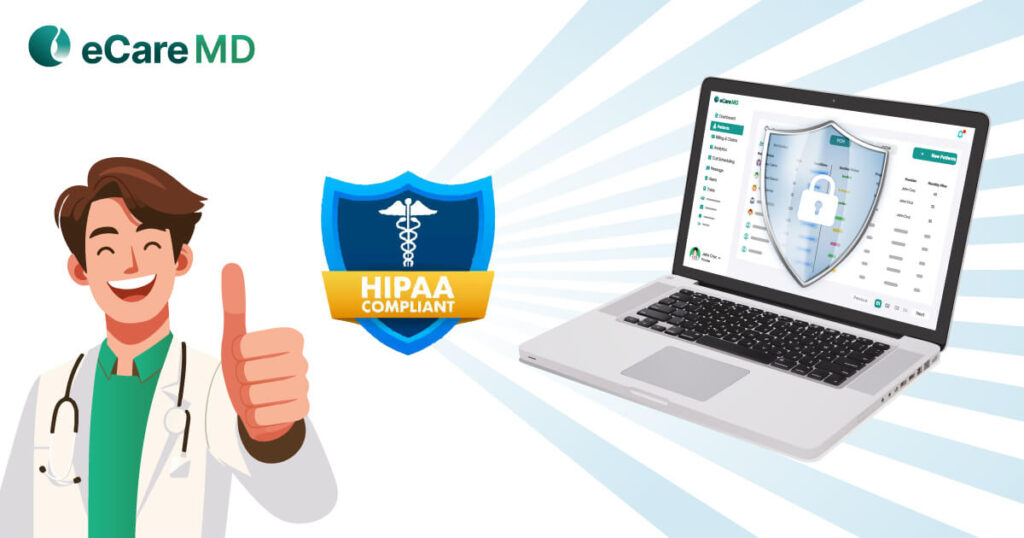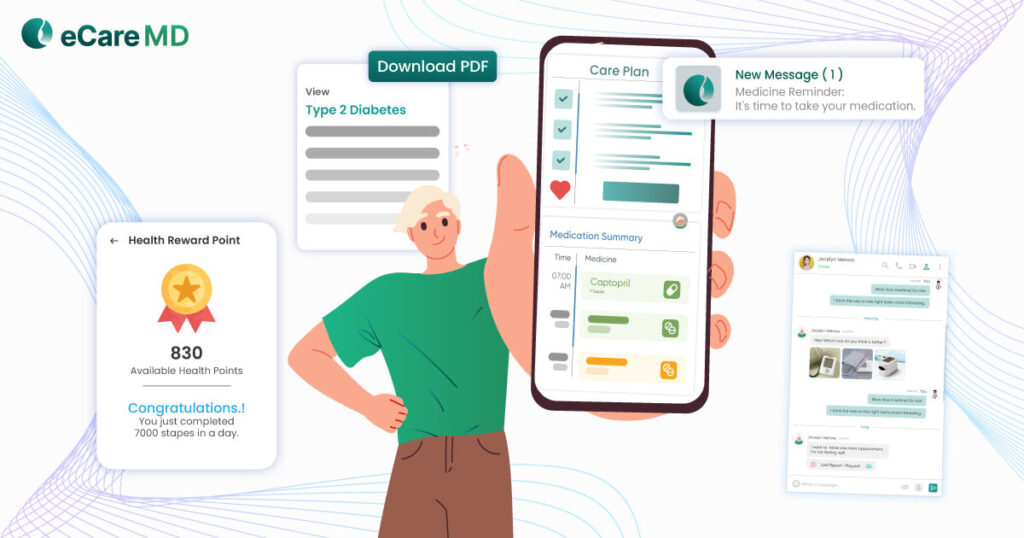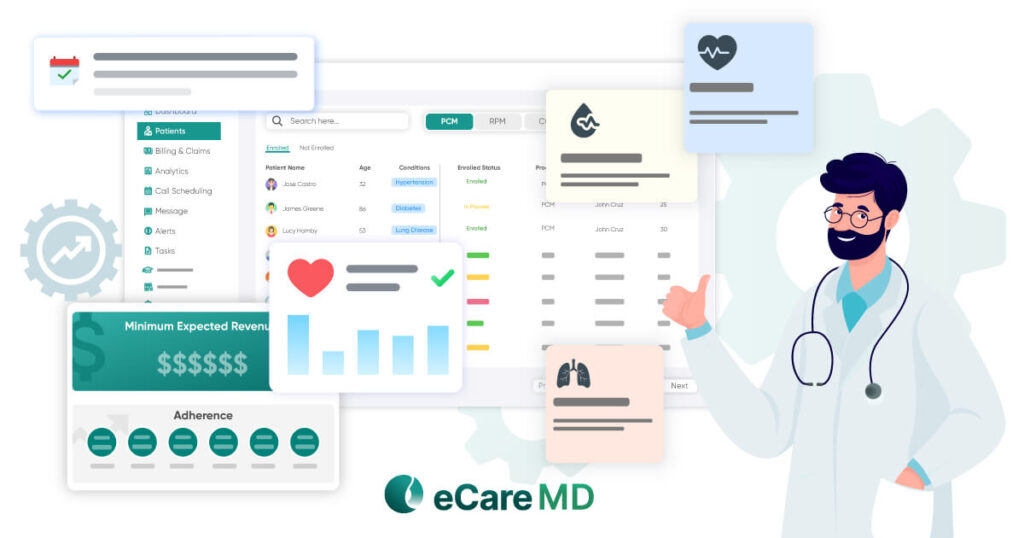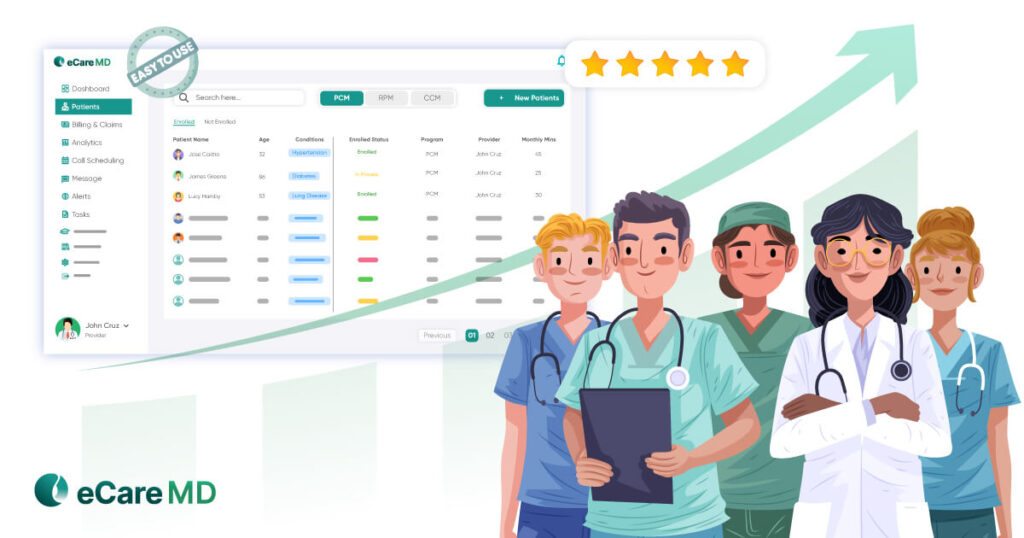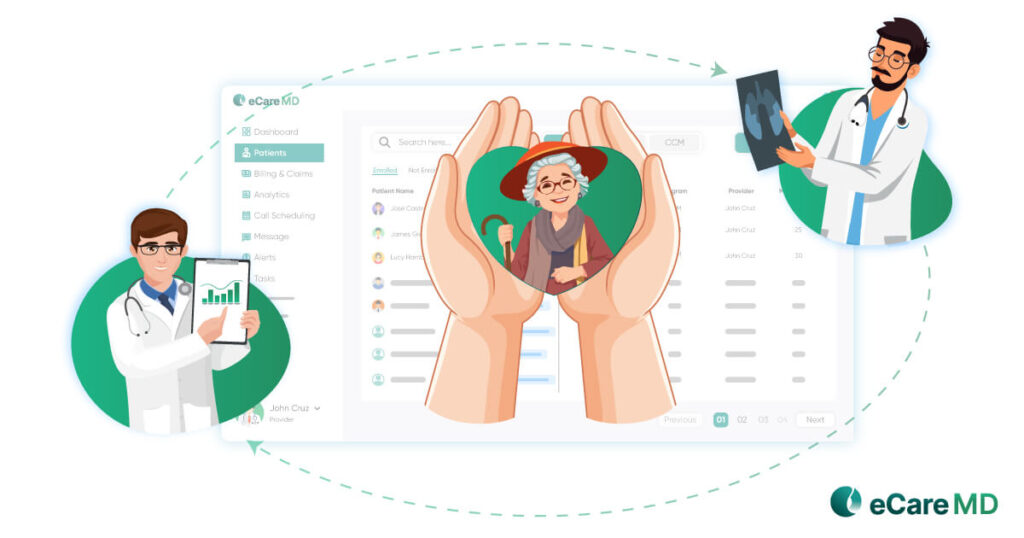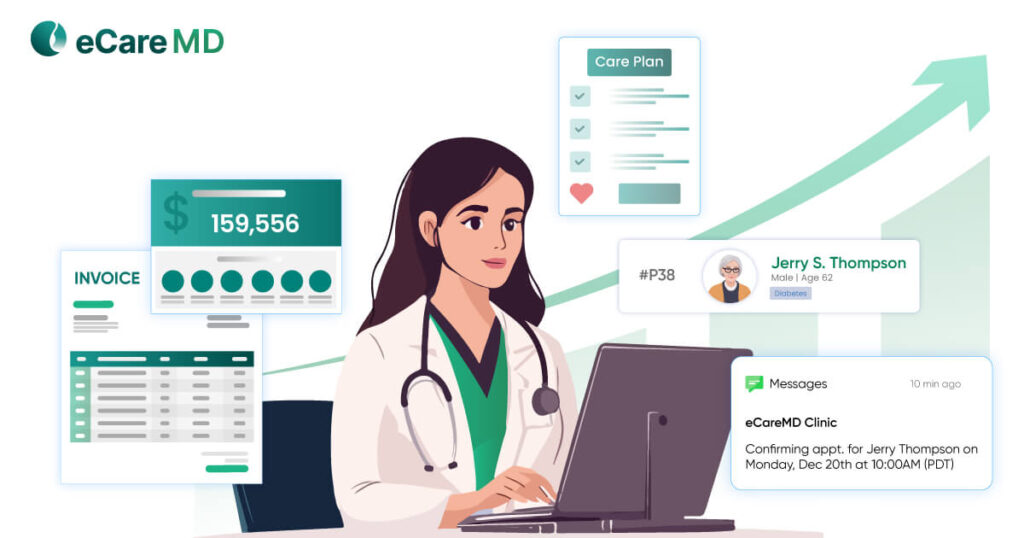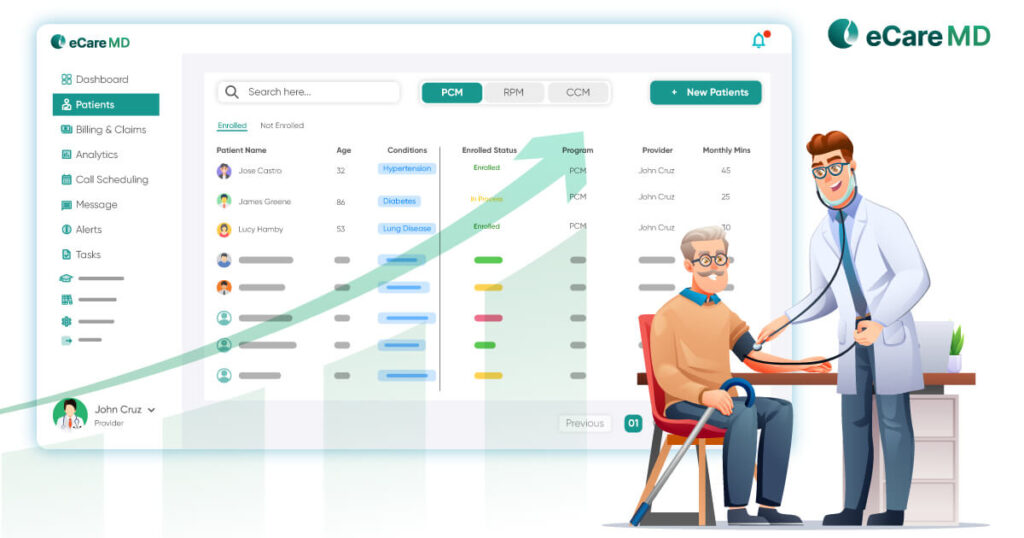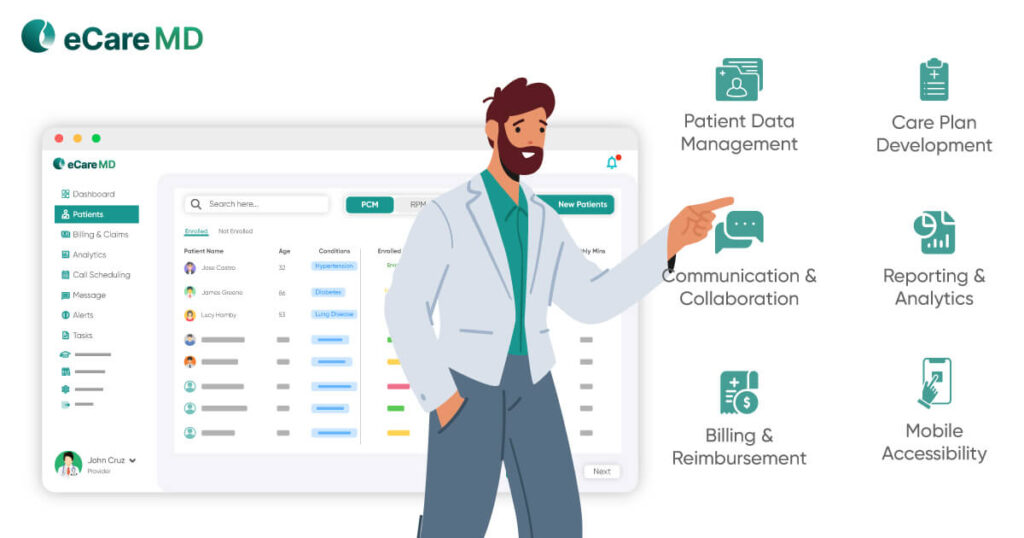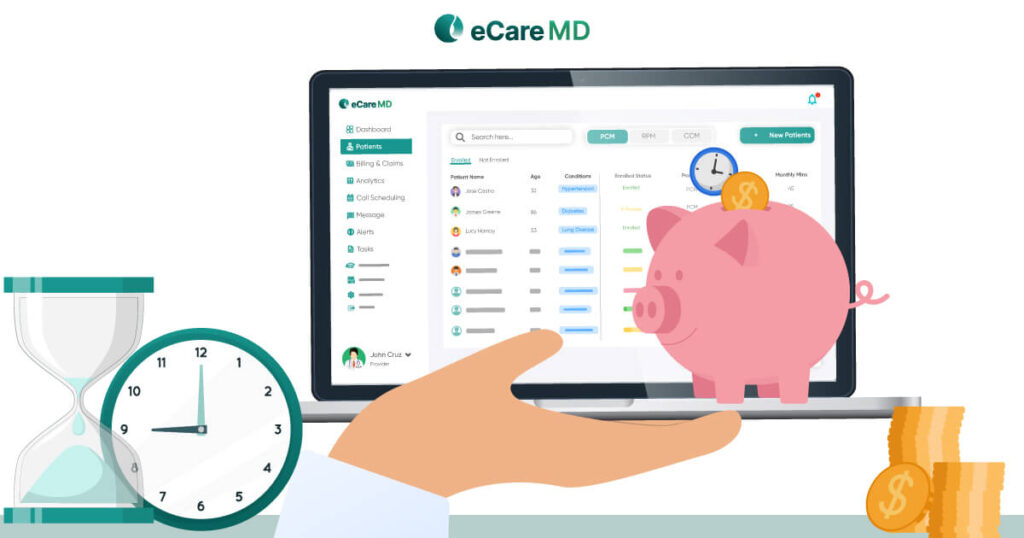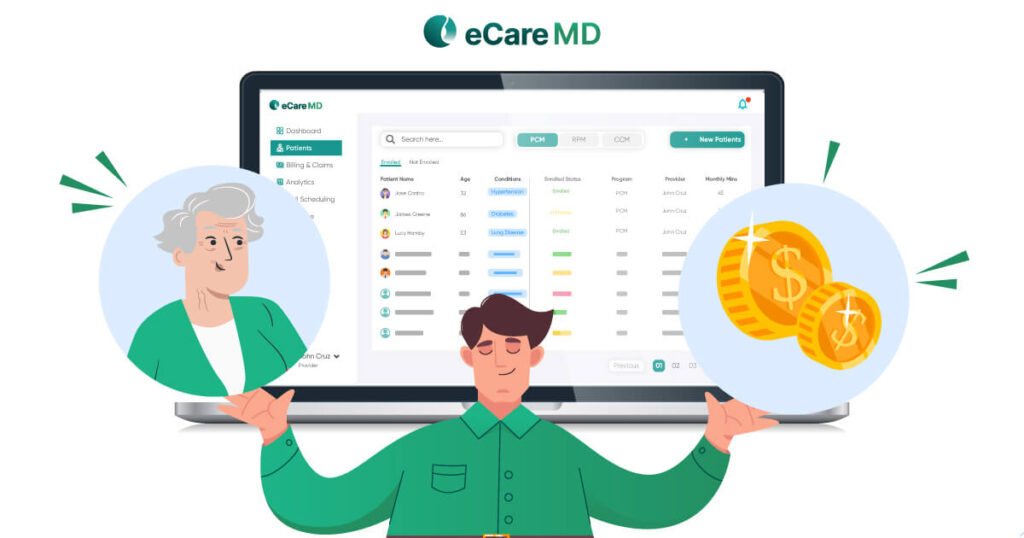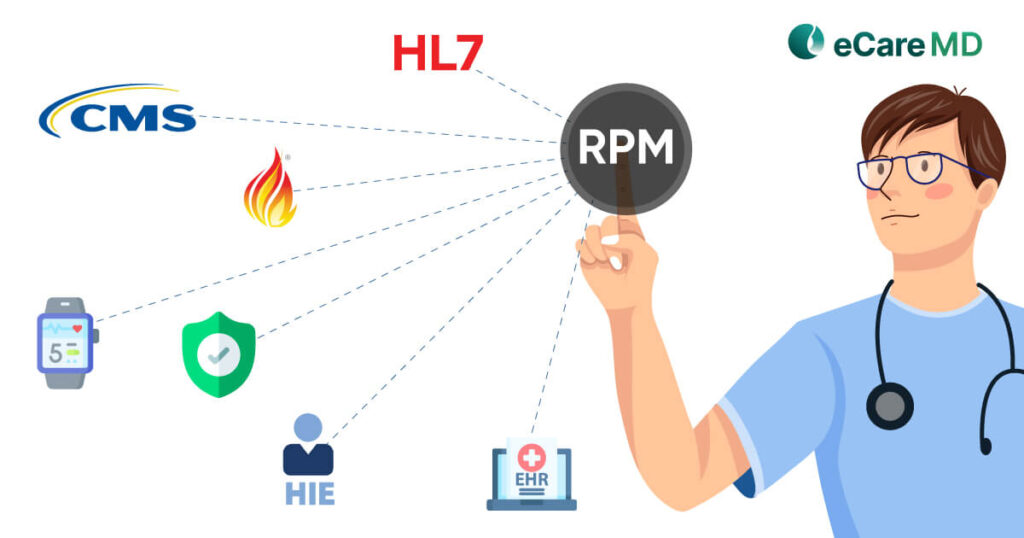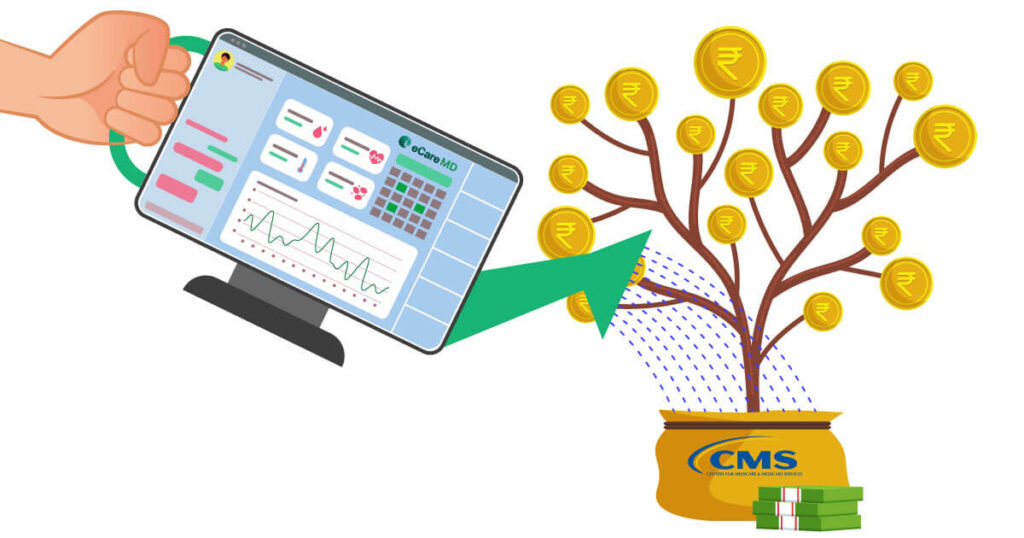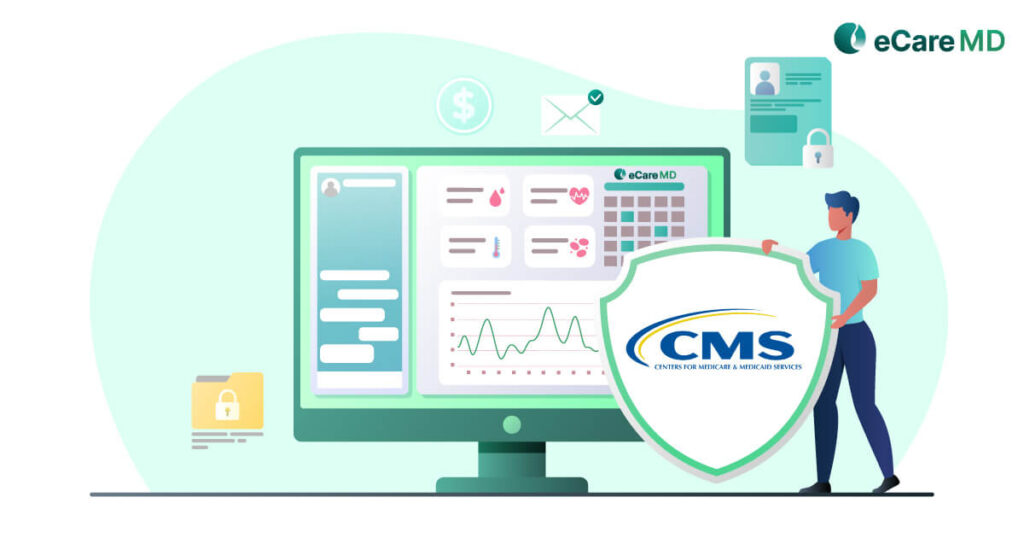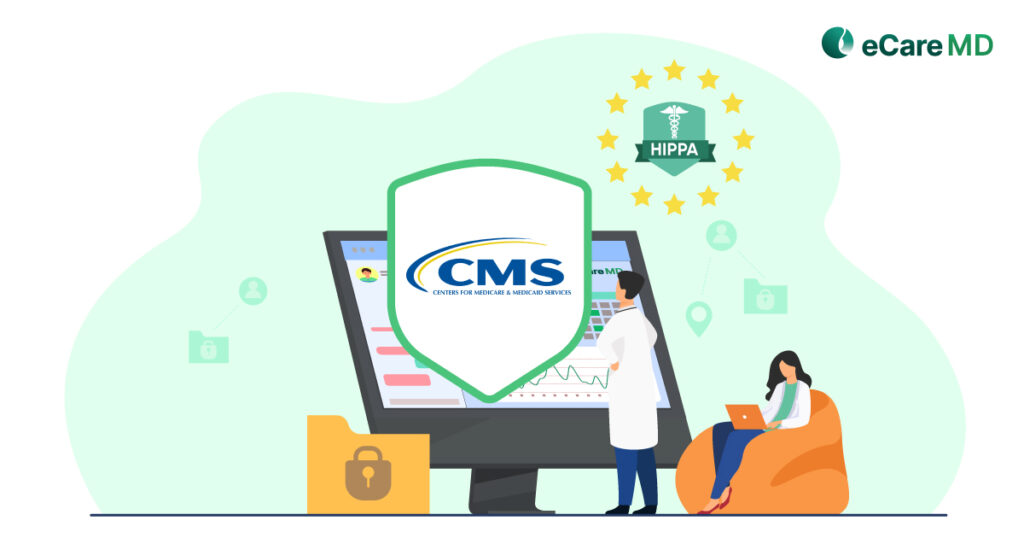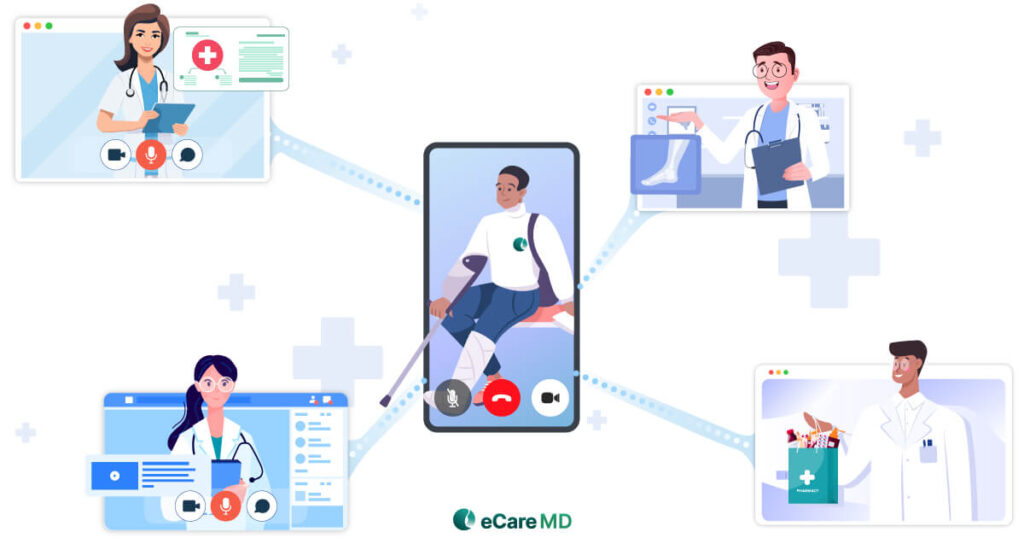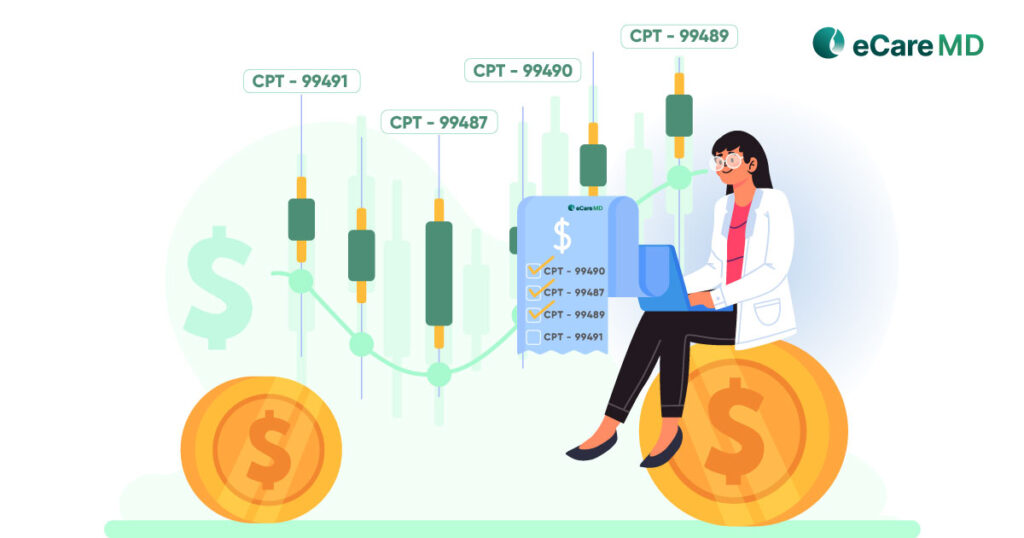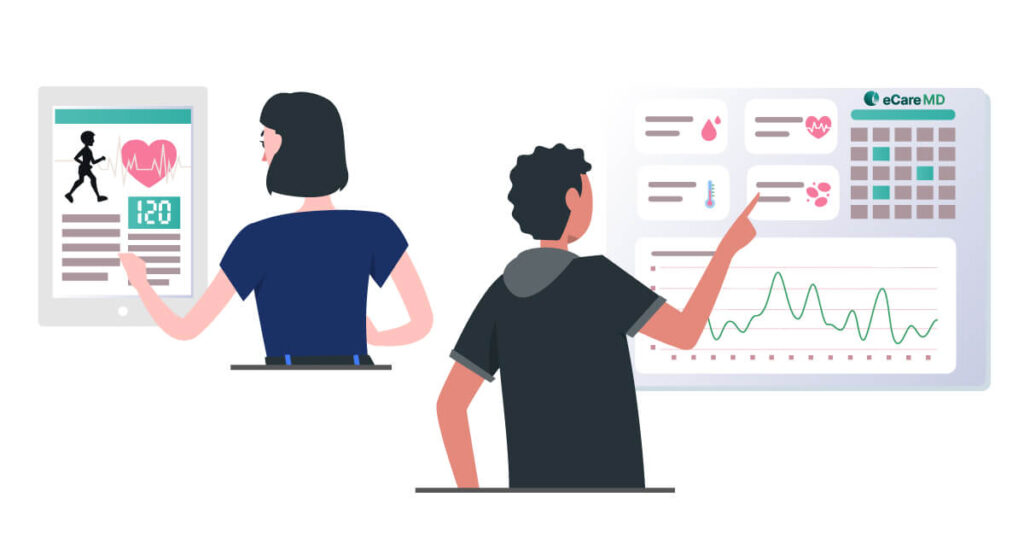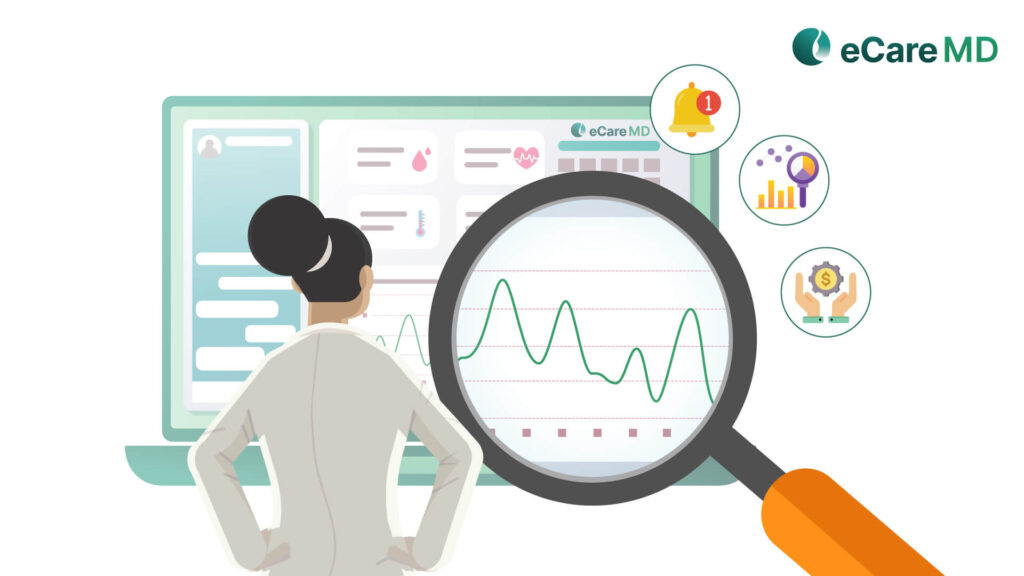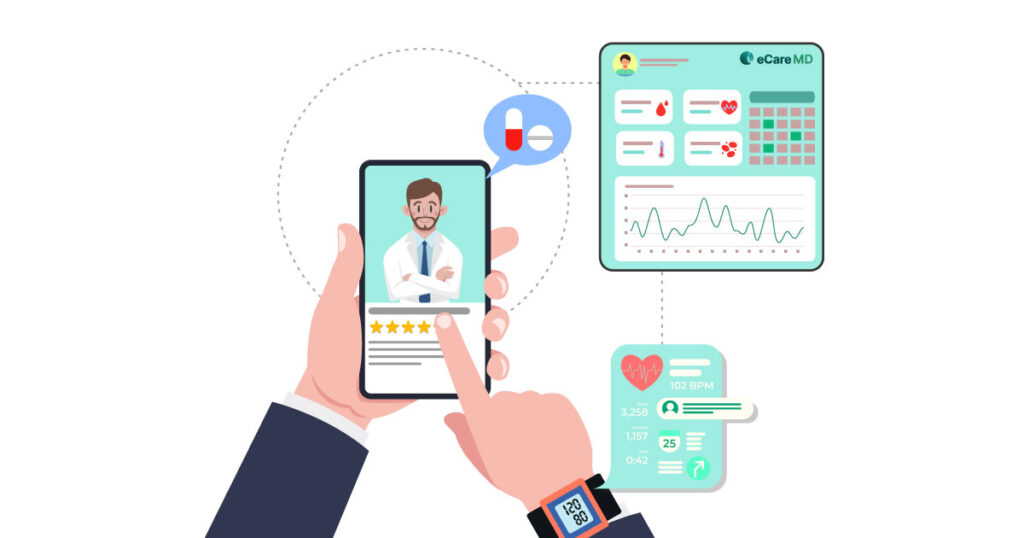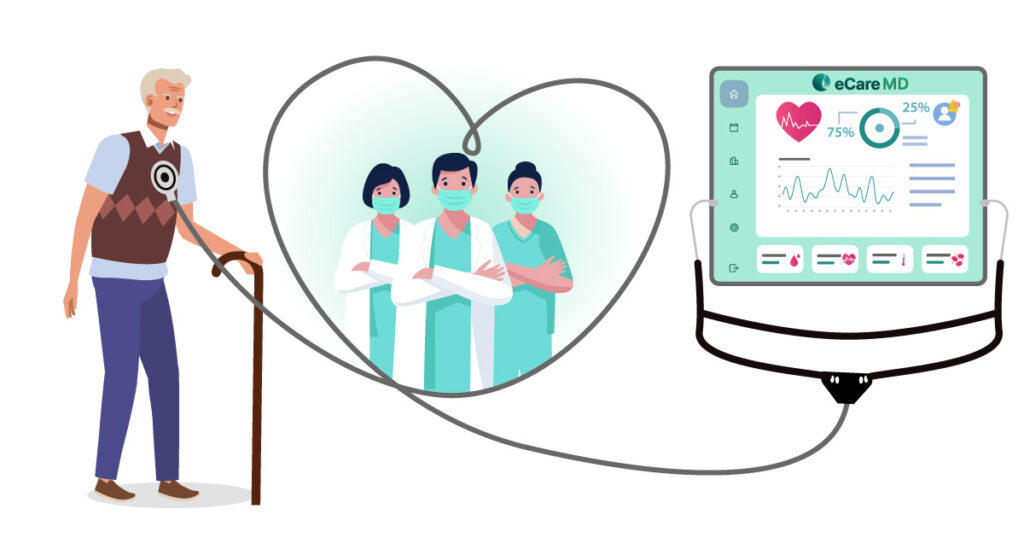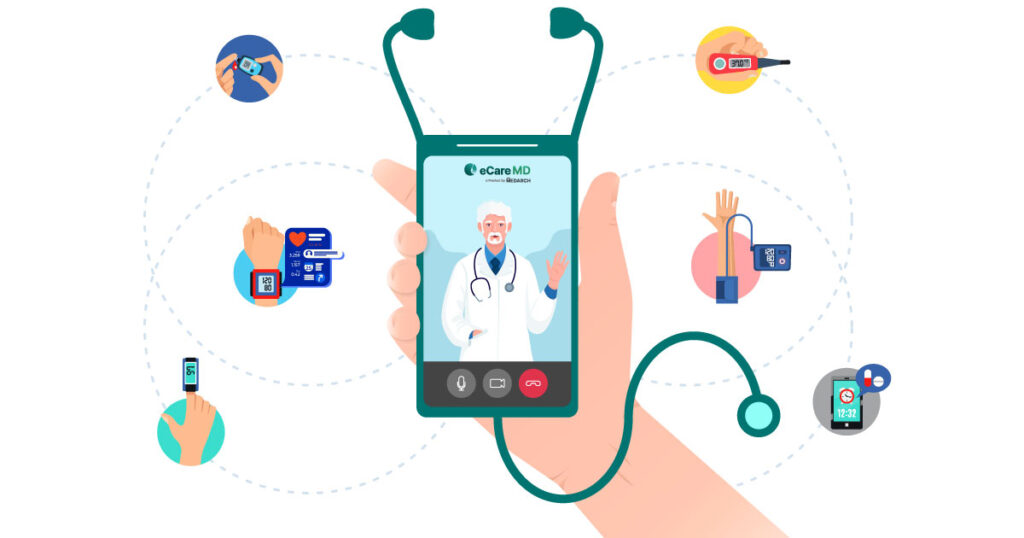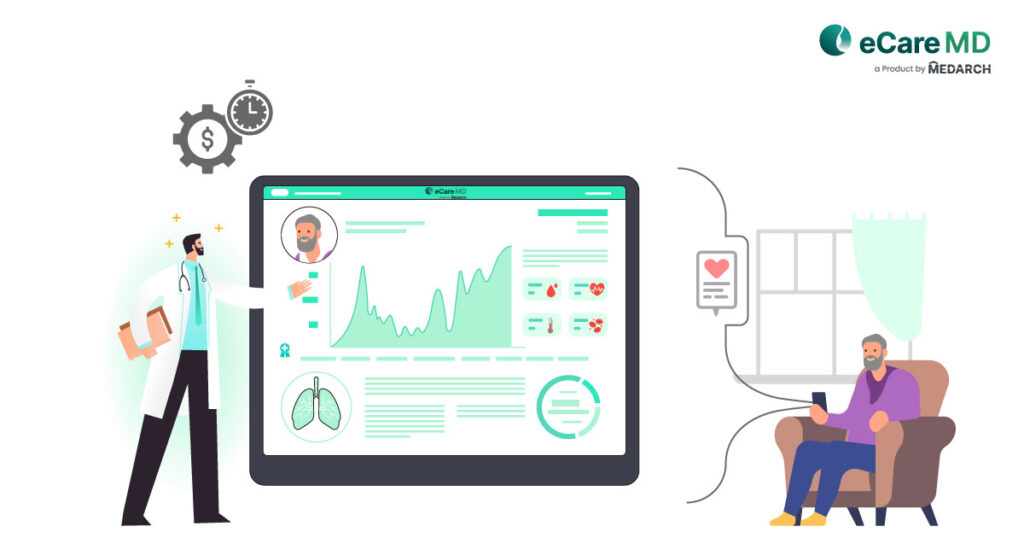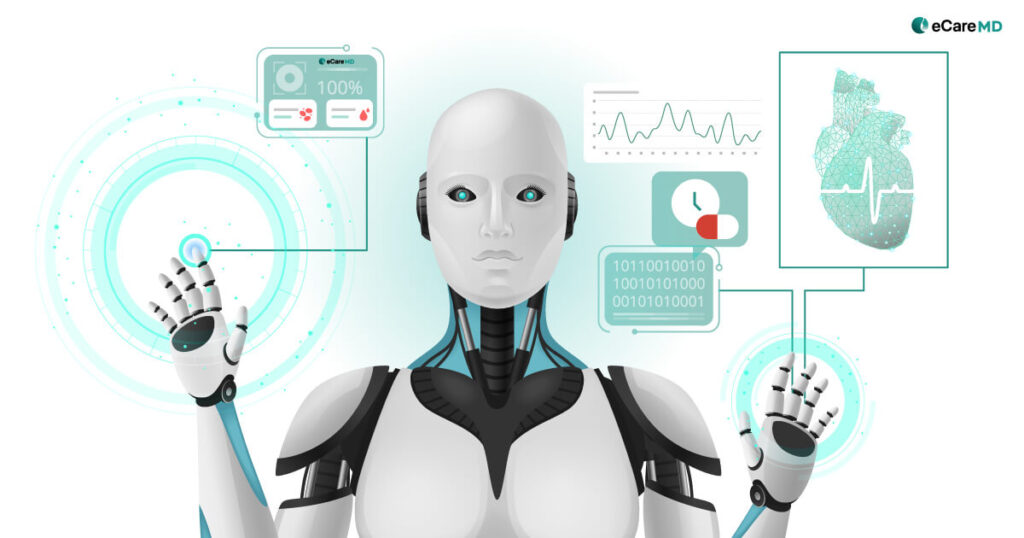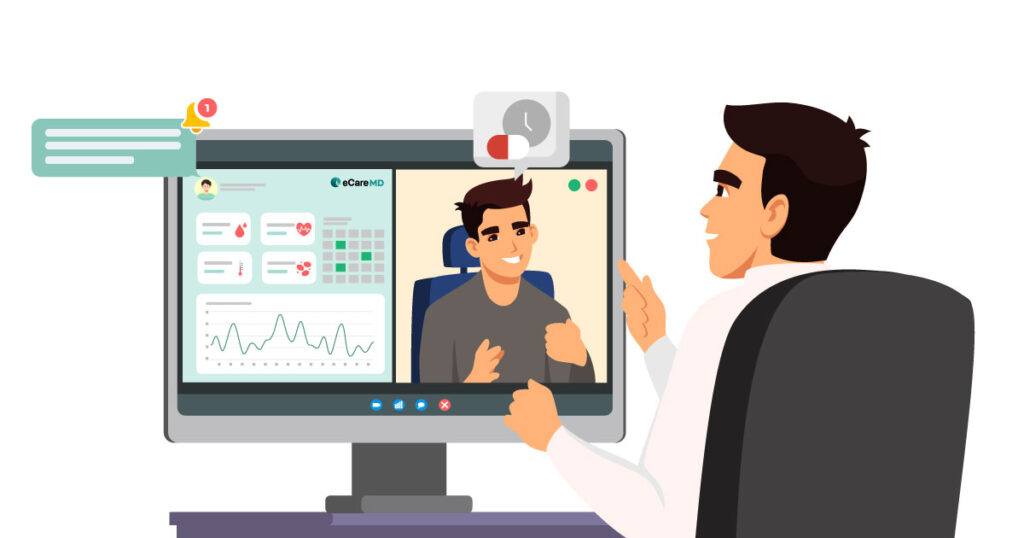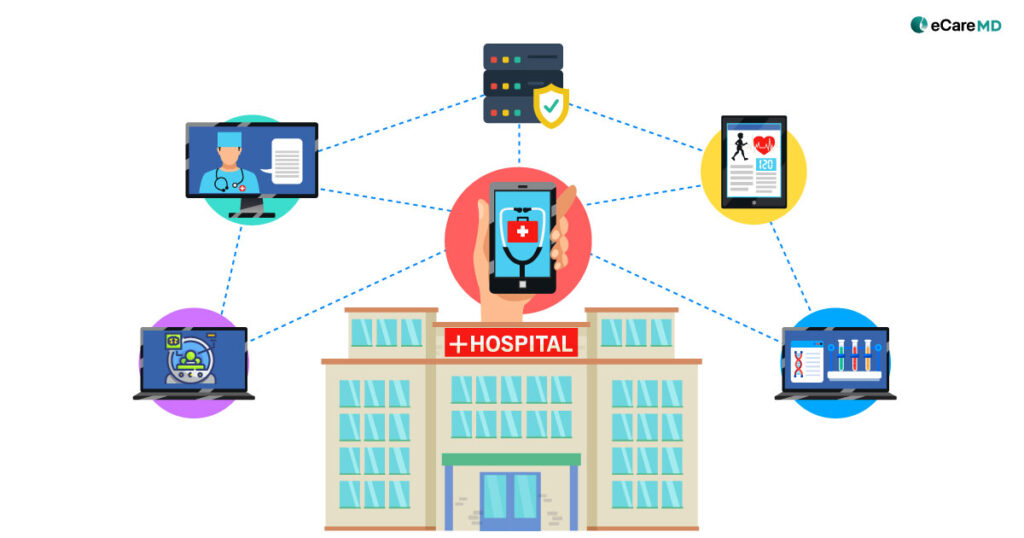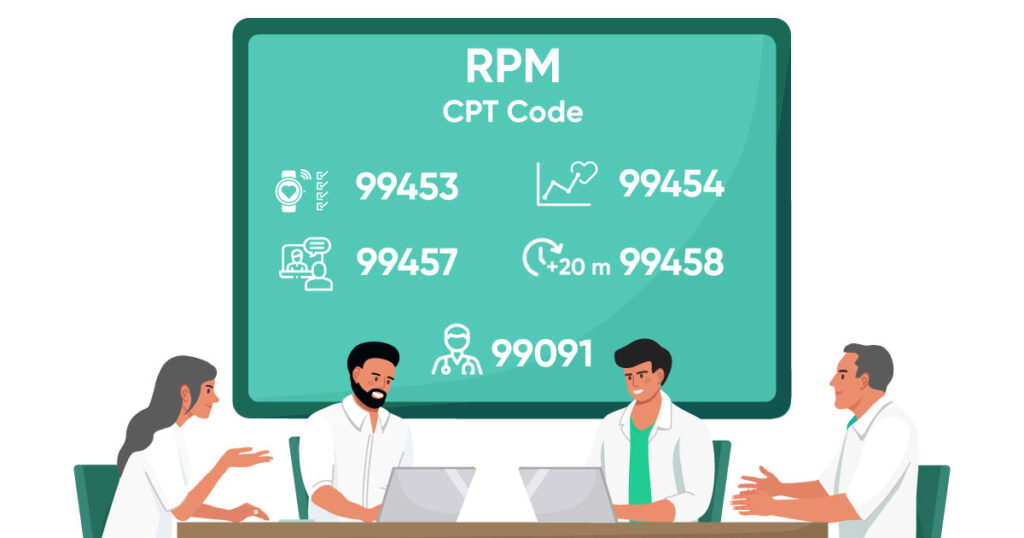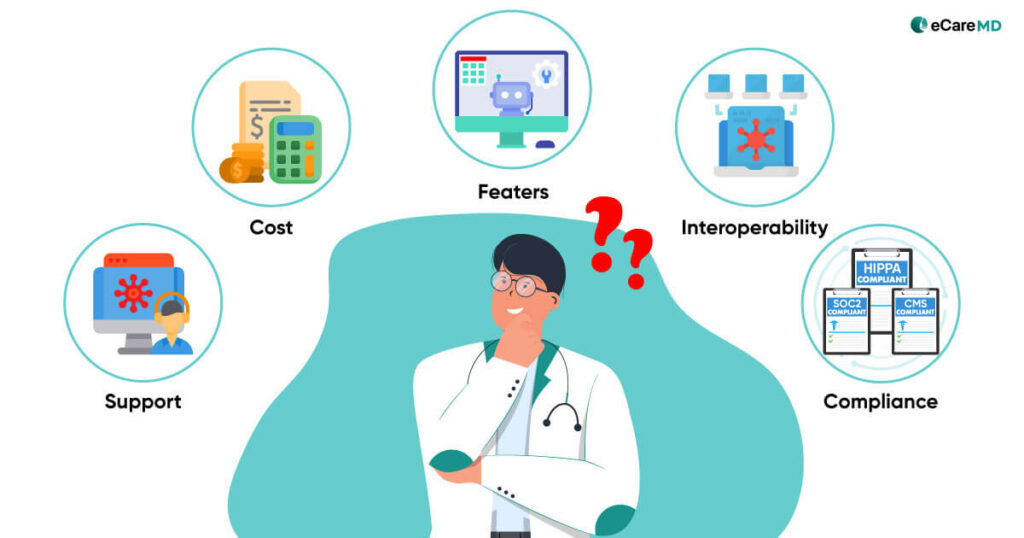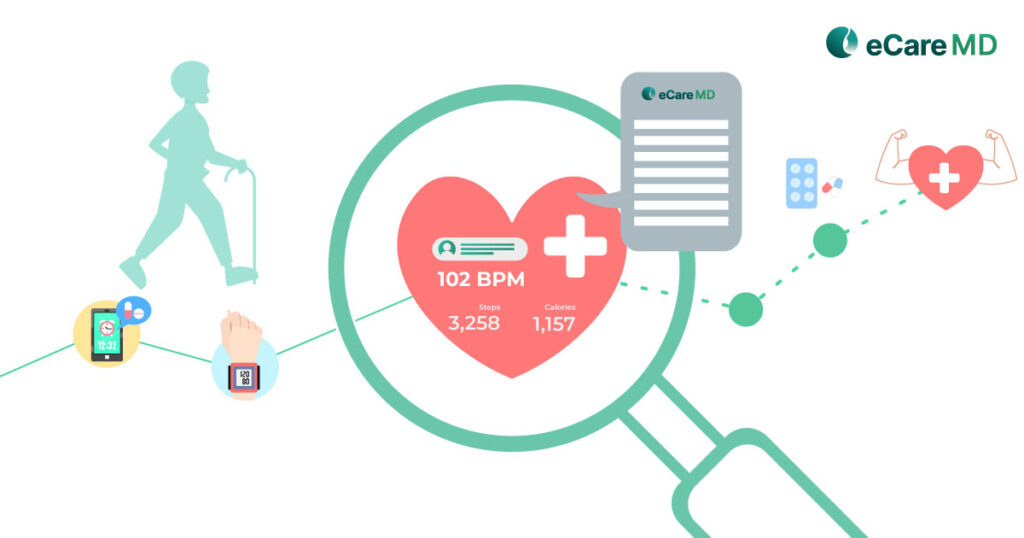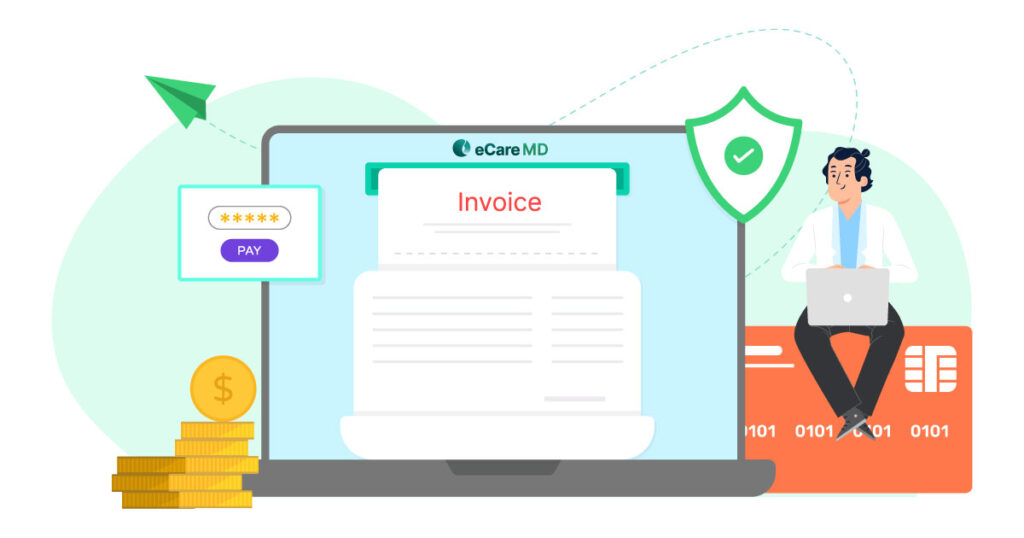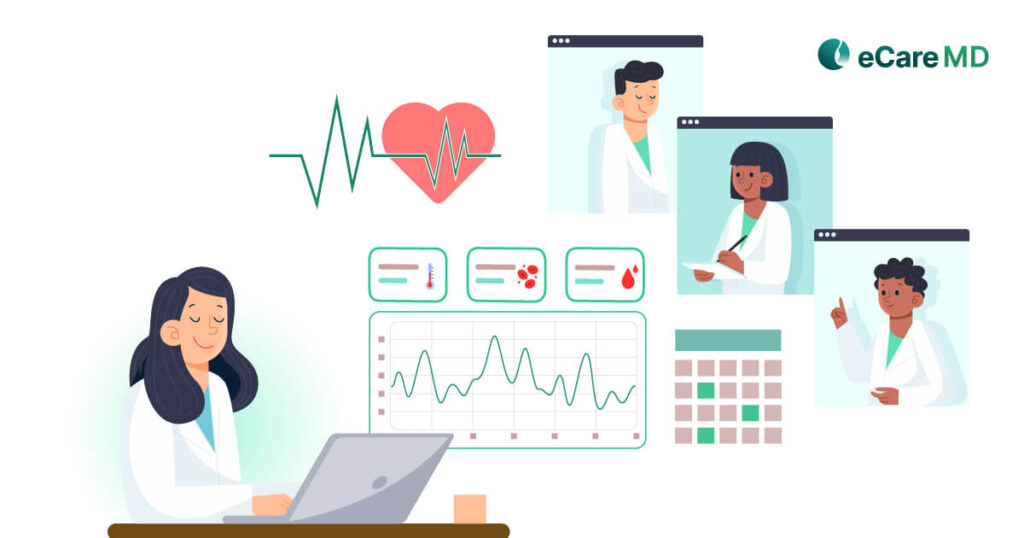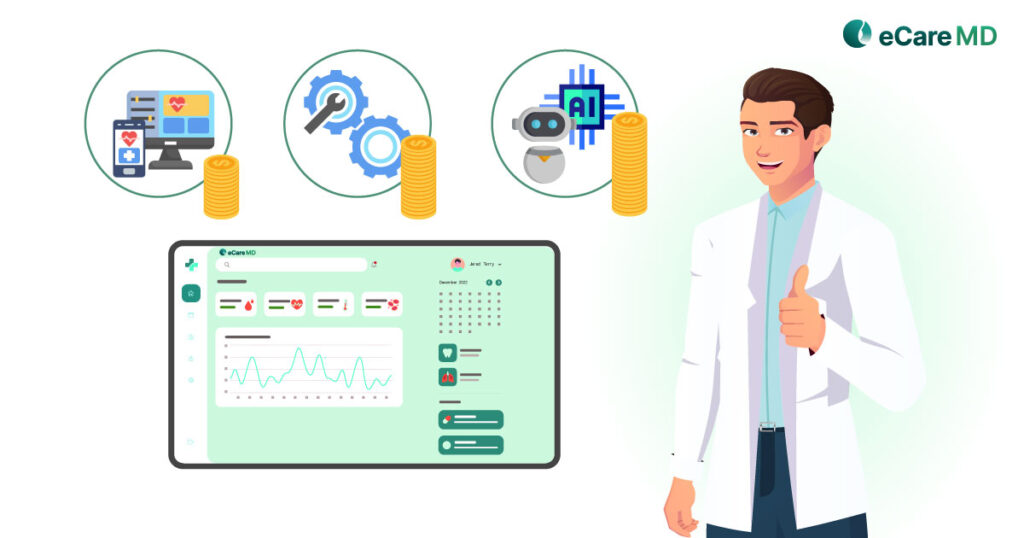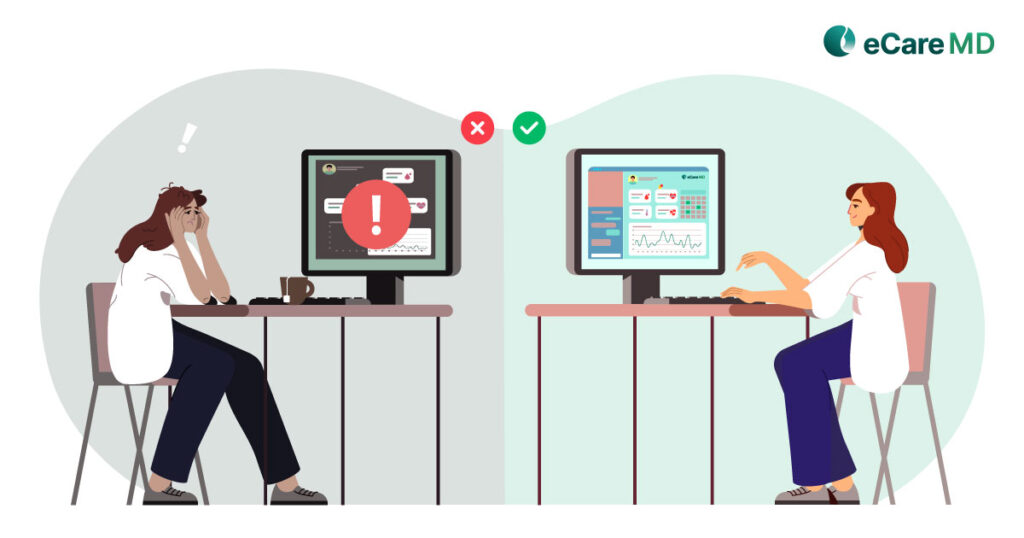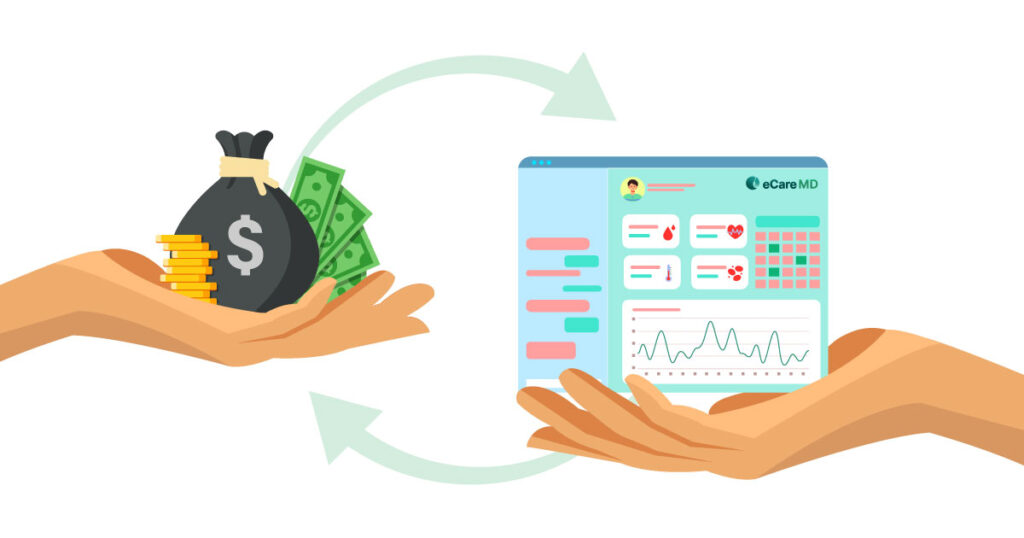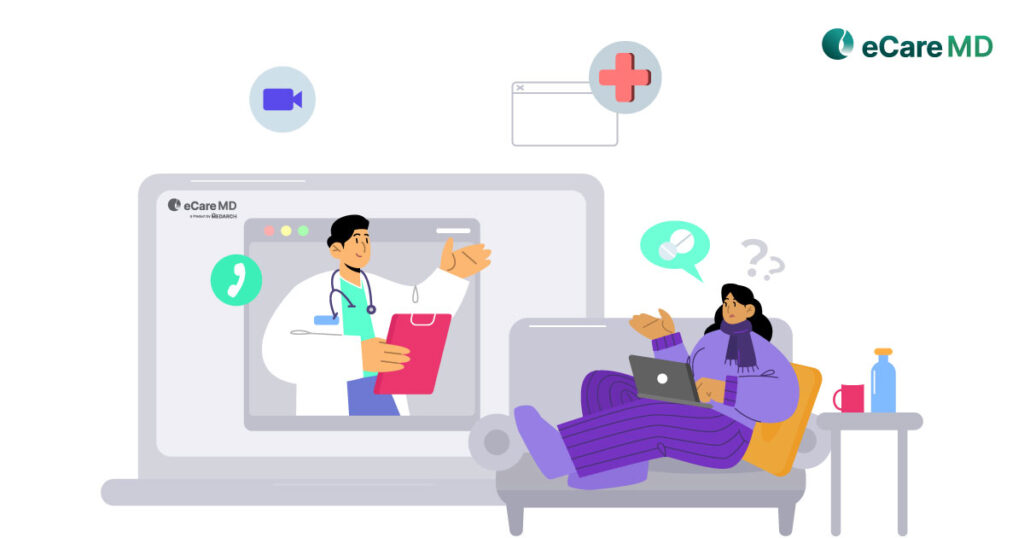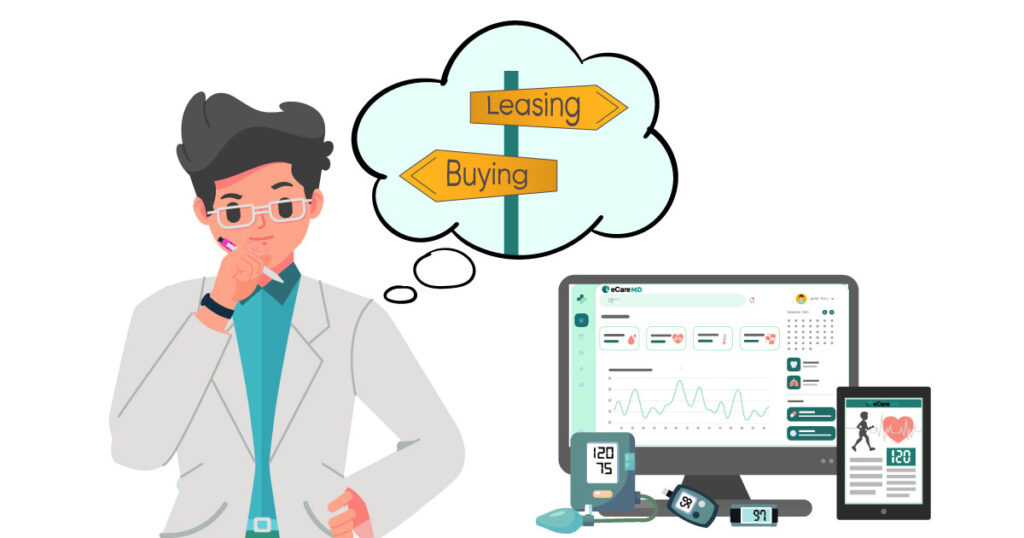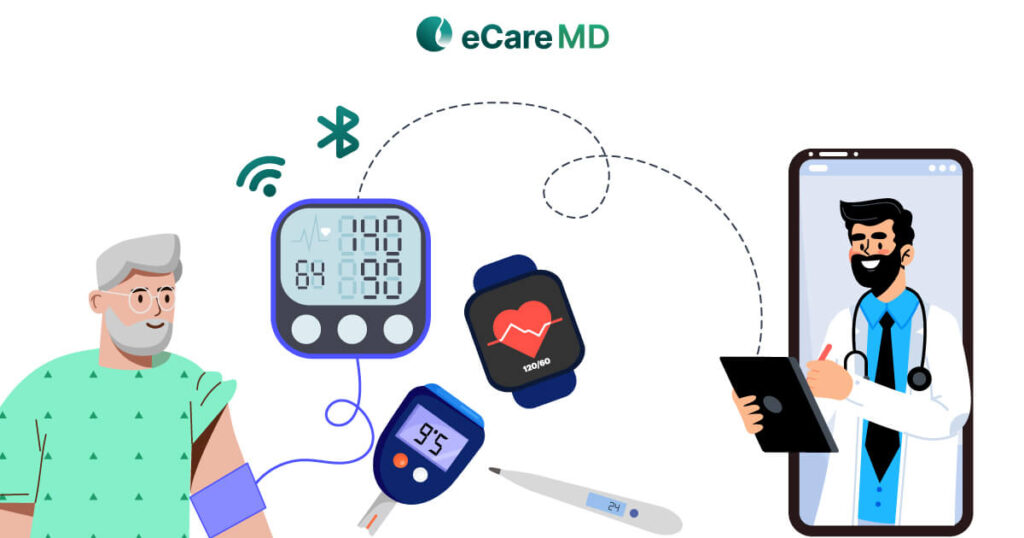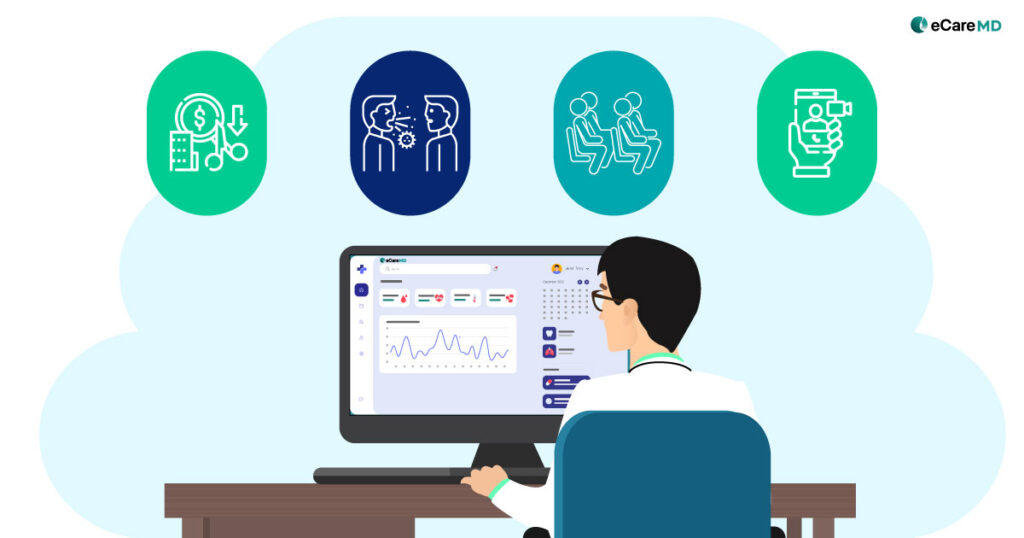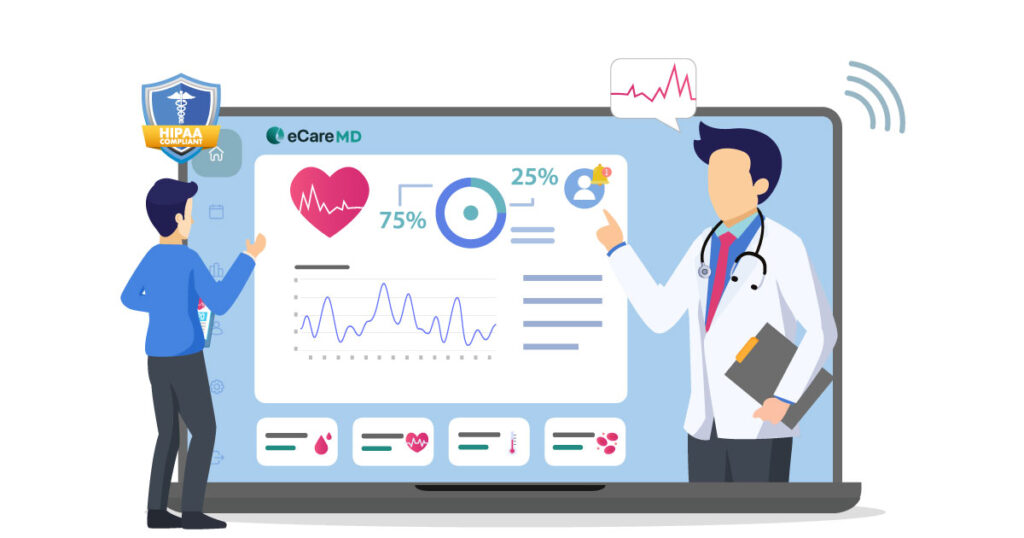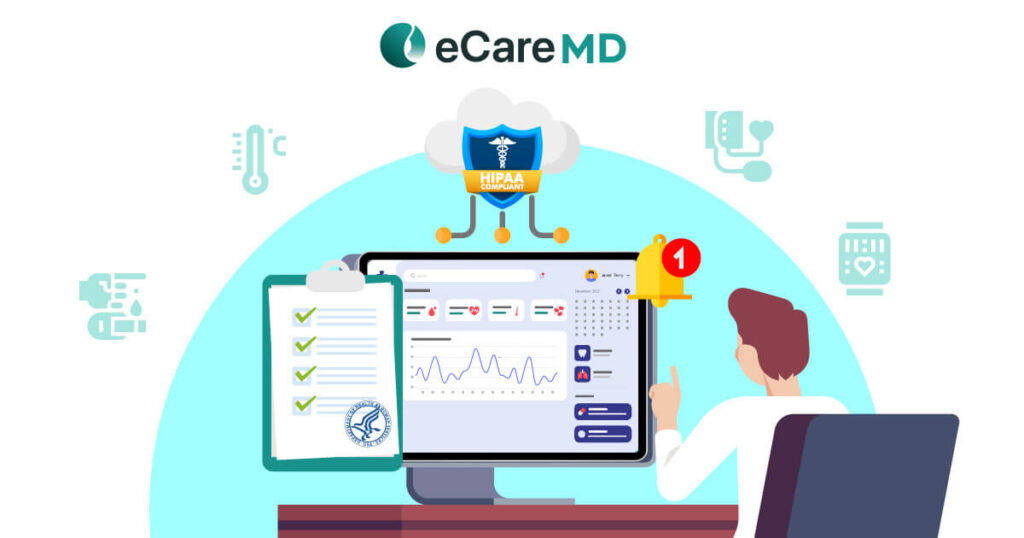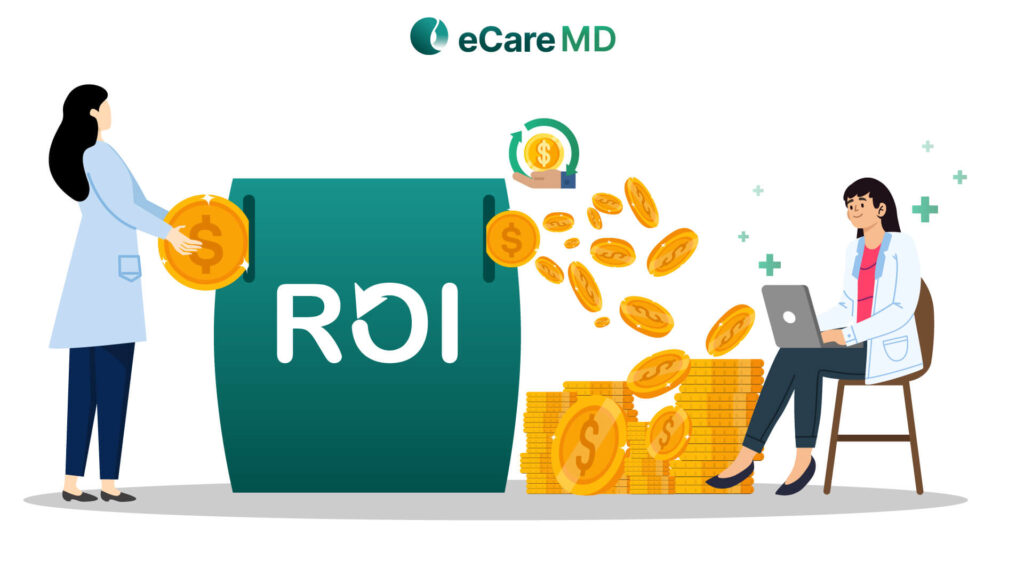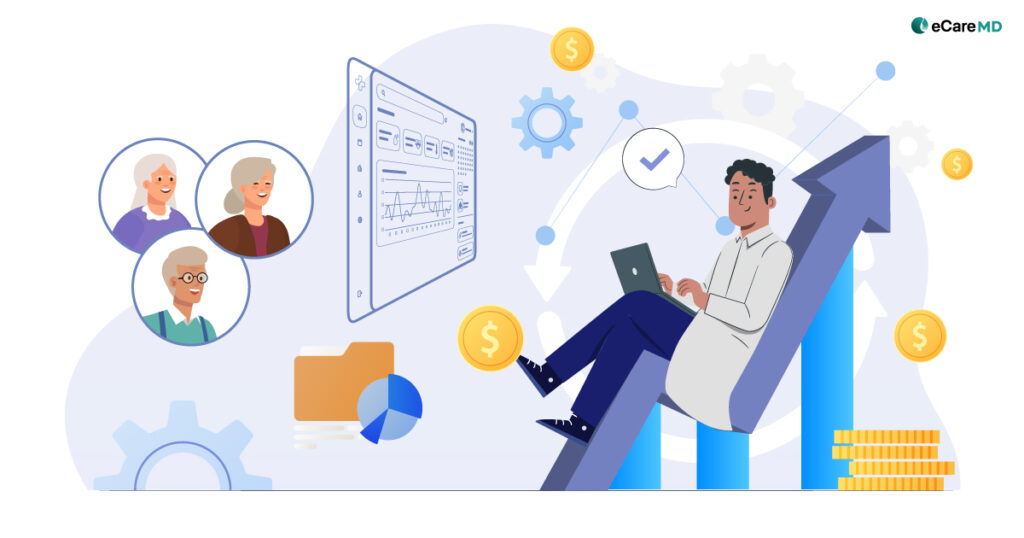Is budgeting for chronic care management software a challenge for you?
In 2015, the Center for Medicare and Medicaid Services (CMS) introduced the Chronic Care Management (CCM) program to reduce the burden on healthcare providers. Leveraging the power of technology, CCM has reduced the overall costs of care for both patients and providers.
The digital shift in modern-day healthcare practices has made healthcare software a necessity for providing better services, especially in a CCM program (or any other healthcare program) where it allows physicians to coordinate between different healthcare providers and patients.
Chronic care management software can indeed simplify manual administrative tasks and drive patient engagement. There are many CCM software programs available on the market, and deciding the best one for you can be confusing. The main factor here is the healthcare software pricing and what is the right cost for chronic care management software.
In this blog, we will be going to provide a detailed overview of the factors impacting the cost of CCM software. And what is the right amount for the ideal CCM Software for your practice!
Factors Influencing Chronic Care Management Software Costs
The cost of a chronic care management software can vary from vendor to vendor. Other than that, the specific needs and requirements of the healthcare practice can also influence the chronic care management software cost.
So, here are some of the factors that influence the CCM software costs:
1. Complexity of CCM Requirements
Requirements for implementing chronic care management are often complex as they depend on factors like patient population, chronic conditions that the clinic addresses, and interoperability with the existing systems.
- Patient Population: A high patient population requires the software to be more extensive. Factors like scalability, increased data storage, and robust communication channels are needed within the software, which again influences the CCM software cost.
- Health Conditions Addressed: Different chronic conditions require specific features and modules in the CCM software. Moreover, not all clinics specialize in every chronic condition. Depending on the conditions, different features like continuous monitoring, secure messaging, or remote patient monitoring become essential in the software to address health conditions. Such customizations and integration in the software can again increase the software cost.
- Integration with Existing Systems: Integration of the CCM software with the existing EHR and billing systems is crucial for smooth operations. Furthermore, outsourcing the CCM program would require further third-party system integrations to increase the compatibility of the software. Such factors contribute to increasing healthcare software pricing.
2. Features and Functionalities
Another factor that increases the chronic care management software cost are its features and functionalities.
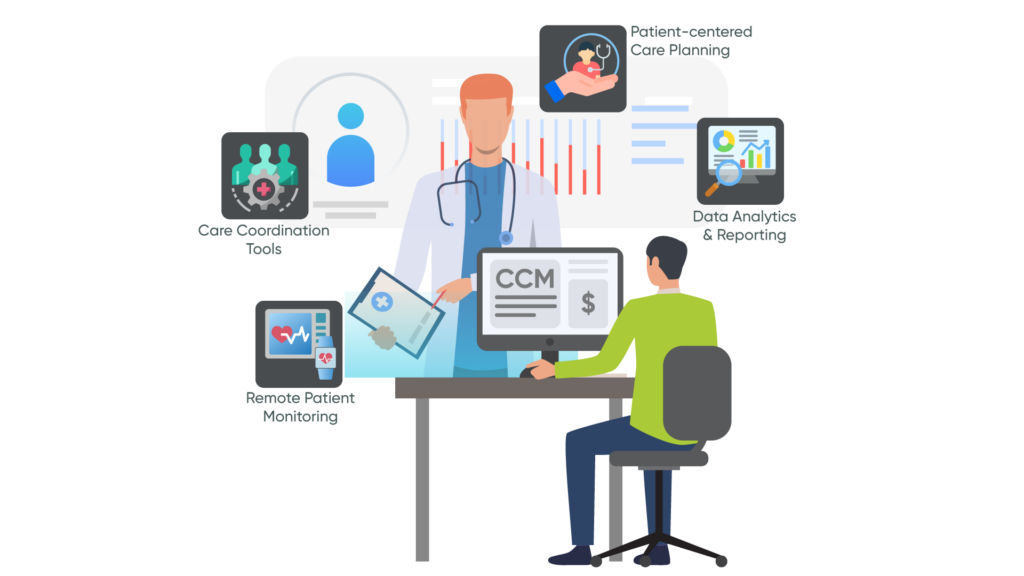
- Care Coordination Tools: Care coordination tools like task assignments, and communication channels facilitate coordination between the care team. Here, the complexity of the tools and automation can contribute to the increased cost of CCM software development.
- Patient-centered Care Planning: Individuals enrolled in the CCM programs need to be offered patient-centered care plans as directed by Medicare. For this, features like goal setting, treatment plans, and patient engagement tools are essential. This requires high customization and integration with EHRs, which can again contribute to higher development costs.
- Remote Patient Monitoring: RPM plays a crucial role in virtually monitoring patient health. It usually involves medical devices that collect and transmit the patient’s health data in real-time. Here, integration with devices, scalability options, developing monitoring algorithms, and complying with the security measures influence the development cost.
- Data Analytics and Reporting: To get insights into patient outcomes, resource management, and internal operations, data analytics and reporting features are a must. Presenting the data in a sophisticated manner and making the software capable of real-time reporting can contribute to higher costs of CCM software development.
Download the Checklist for Top 10 Must-Have Features in CCM Software
Download now3. Customization and Scalability
- Tailoring to Specific Healthcare Practices: Every healthcare practice addresses specific chronic conditions and has a unique workflow for the healthcare organization. Custom forms, workflows, and existing system integration are some of the specific needs that require customization in the CCM software. Higher customization increases the chronic care management software cost, and to meet the demands, the software might require additional resources and development time.
- Adapting to Future Growth and Changes: An increasing number of patients and users will require the CCM software to be flexible to adapt to future growth and changes. To make the software scalable, factors like infrastructure, architecture, and system design are to be considered. Such factors influence the cost of the CCM software.
Types of CCM Software
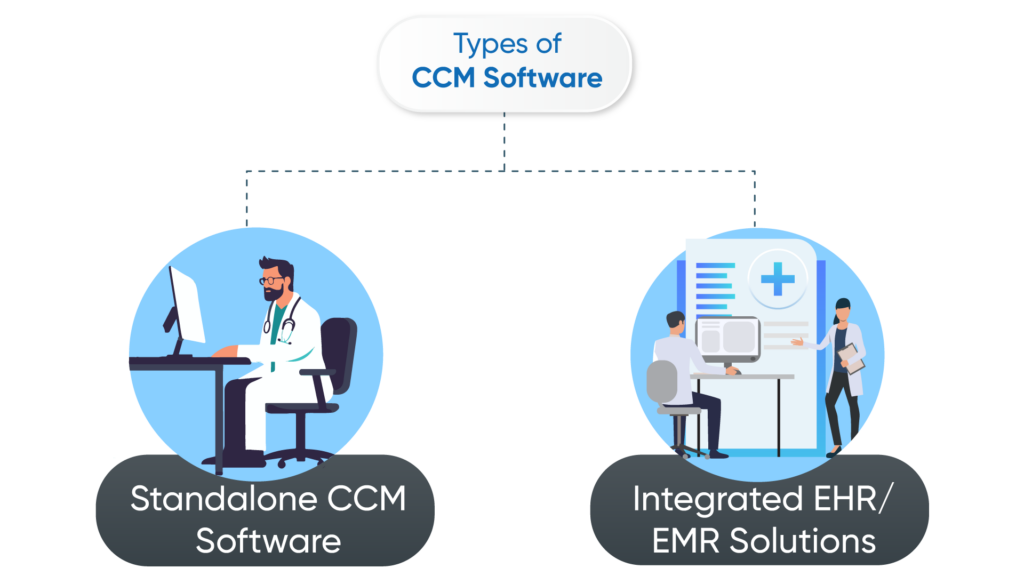
Basically, in the open market, there are two types of chronic care management software available.
1. Standalone CCM Software
Standalone chronic care management software is specially designed software for healthcare providers to manage patients with chronic conditions. This software solution usually contains all the chronic care management software features and functionalities, which includes tracking patient health information, securing communication channels, and creating and managing care plans.
Standalone CCM software is usually a cost-effective solution suitable and best suited for small-scale healthcare practices. The major drawback of these software solutions is the integration with external EHR/EMR systems. This affects the interoperability of the software and causes complications in the seamless sharing of data. Since standalone CCM software is limited to a healthcare practice only, its cost is comparatively lower than that of other CCM software solutions.
2. Integrated EHR/EMR Solutions
Large healthcare organizations usually work in collaboration with several other healthcare service providers. This needs the software solutions to be integrated well with the EHR/EMR systems of those organizations.
The need for integration of the software solutions increases the complexity of the CCM software to make it interoperable. This, along with the compliances that need to be adhered further influences the cost of the solutions. However, for future prospects, this solution can be the ideal choice for healthcare providers.
Pricing Models
The pricing models for chronic care management software are defined from either of the models mentioned below:
1. Subscription-based models
Off-the-shelf software solutions usually follow subscription-based pricing models. Here, the healthcare provider has to pay the vendor a fixed amount for using their software solutions. These subscription-based models are further divided into two types:
- Monthly or Annual Subscription: In this model, the healthcare provider has to pay a subscription on a monthly basis or annually to use the software. These are more suitable options for small-scale practices.
- Tiered Pricing Based on Usage: In this pricing model, the vendor bills the healthcare provider on a subscription basis for using the specific chronic care management software features and functionalities.
2. Per-user Pricing
In this type of pricing model, the vendor charges the healthcare provider based on the number of users per patient using the CCM software. Depending on the number of patients, per-user pricing can change. For example, a healthcare practice having a higher patient population can be charged around $0.99 to $10. Whereas, if there is a low patient population, then the vendor can charge a high per-user cost to meet the development cost of the software solution. The per-user pricing model is mostly suitable for large healthcare organizations.
However, some of the things that large healthcare organizations to consider are:
- Number of users using the software
- HIPAA Compliance
- Integration with the Existing system
- Software UI/UX
- Customization and Scalability
- Training and Support
3. Additional Costs
Other than these two pricing models mentioned above, the vendor can again bill the healthcare provider for the following additional costs:
- Implementation and training fees: Usually, the implementation of the CCM software in the existing system comes under the additional services and has separate costs. Along with that, the healthcare staff will require hands-on training with CCM software, which can again influence the cost of the CCM software.
- Maintenance and Support Costs: Ongoing maintenance with regular software updates and ensuring compliance with industry standards is an essential part of keeping the software running effectively. Depending on the vendor, the cost of this can vary and can again influence the cost of the software.
Conclusion
The cost of CCM software is influenced by various factors. From an outsider’s perspective, the development cost is usually taken into consideration. However, the unique needs and requirements for the smooth functioning of the healthcare practice usually influence the healthcare software pricing.
Along with that, before deciding on the chronic care management software, things like pricing strategy, type of software, the unique needs of the practice, and the future prospects of the healthcare organization need to be considered. Once everything mentioned above is considered, you can get a clear idea about the cost of the software and be assured that you are not overpaying for the solution you are buying.
Frequently Asked Question’s
The average chronic care management software costs from $0.99 to $10 per patient per month; however, this cost can vary from vendor to vendor. Further customization in the chronic care management software features can further affect the cost.
The factors that contribute to the overall chronic care management software cost are:
- Custom Features
- Patient Population
- Telehealth, RPM, and EMR Integration
- Custom Software Development
Yes, there are two major chronic care management pricing models available in the market:
- Subscription-based pricing model
- Per-user pricing model
Some of the features that you should prioritize when choosing chronic care management software are:
- Patient Portal
- Telehealth and EHR Integration
- Patient Engagement and Communication
- Care Coordination
- Interoperability
- Custom Care Plan Creation
To find affordable chronic care management software, you must first assess your needs and inquire with different vendors, checking their offerings and prices. Along with that, it is important to negotiate with the vendor to get you the right price.
The set-up- fees associated with chronic care management software include:
- Initial set-up fees
- Onboarding fees
The implementation costs associated with the chronic care management software include:
- Integration fees
- Customization fees
- Training fees
Chronic care management software training offered by vendors often includes training the users on how to use the software. Along with that, the support usually comes in the form of maintenance of the software.
Yes, you can integrate your existing EHR system with the custom chronic care management software.
Signing a long-term contract when purchasing chronic care management software for your practice is recommended when you are serving a large patient population. However, assessing your needs first is often recommended.
There are certain federal government initiatives and incentives that help offset chronic care management software costs are:
- Centers for Medicare and Medicaid Services
- CMS Meaningful Use EHR Incentive Programs
- CHRONIC CONDITIONS MANAGEMENT FOR SMALL HEALTHCARE PROVIDERS GRANT PROGRAM
- Health Resources and Services Administration (HRSA)
- Rural Health Outreach Grant Program
- Maternal and Child Health (MCH) Block Grant
Cloud-based chronic care management software usually has lower upfront costs and requires monthly subscription fees for maintenance and ongoing support. On the other hand, on-premise solutions require significant up-front investment. However, make a choice based on your practice and the patient population you are serving.
The first step to optimize your investment in chronic care management software implementation is to carefully assess the needs and requirements and then define your goals. Along with that, conduct a thorough vendor evaluation and post-implementation costs, which often include existing system integration, clinical workflows, patient engagement, etc.



